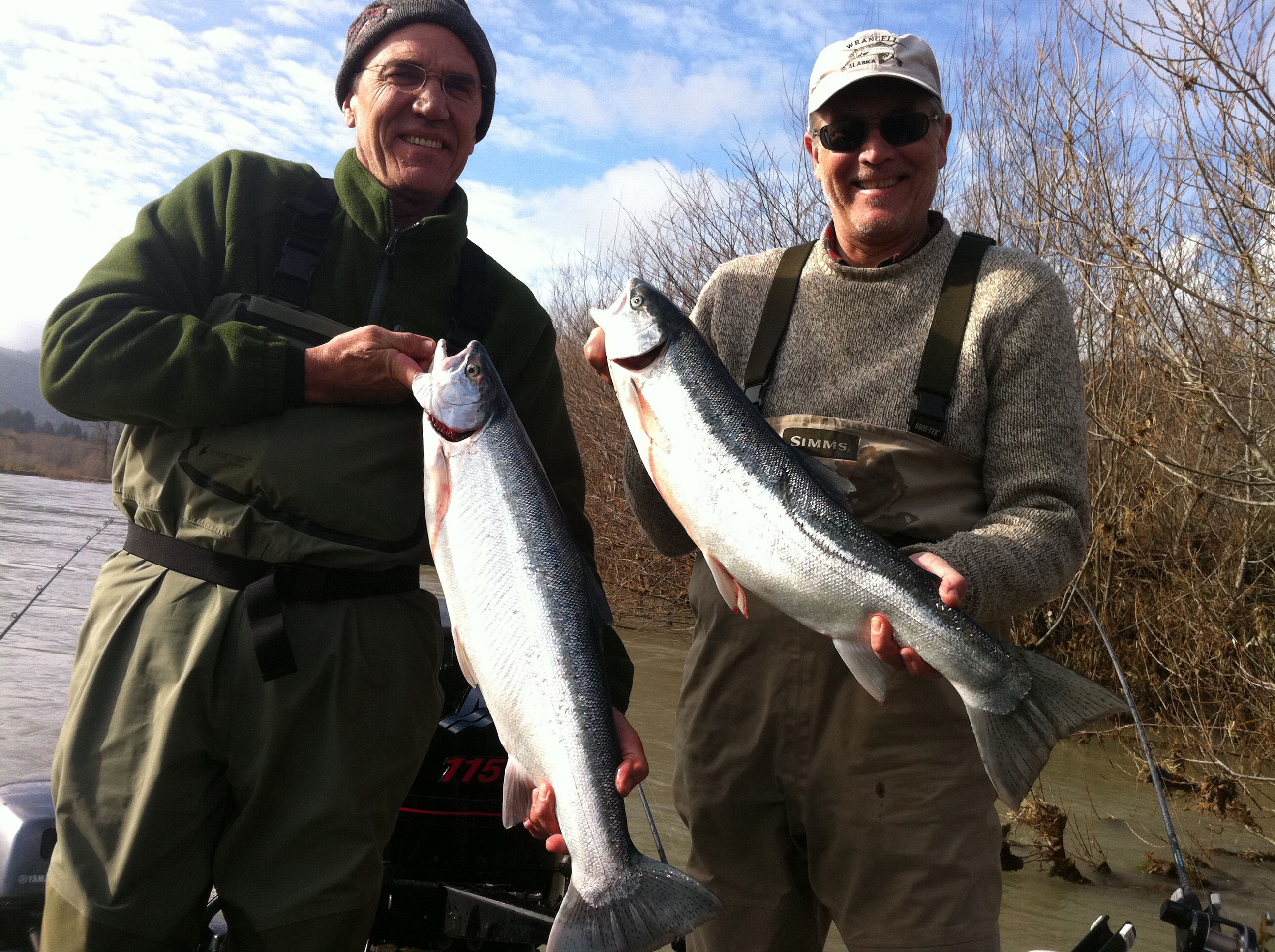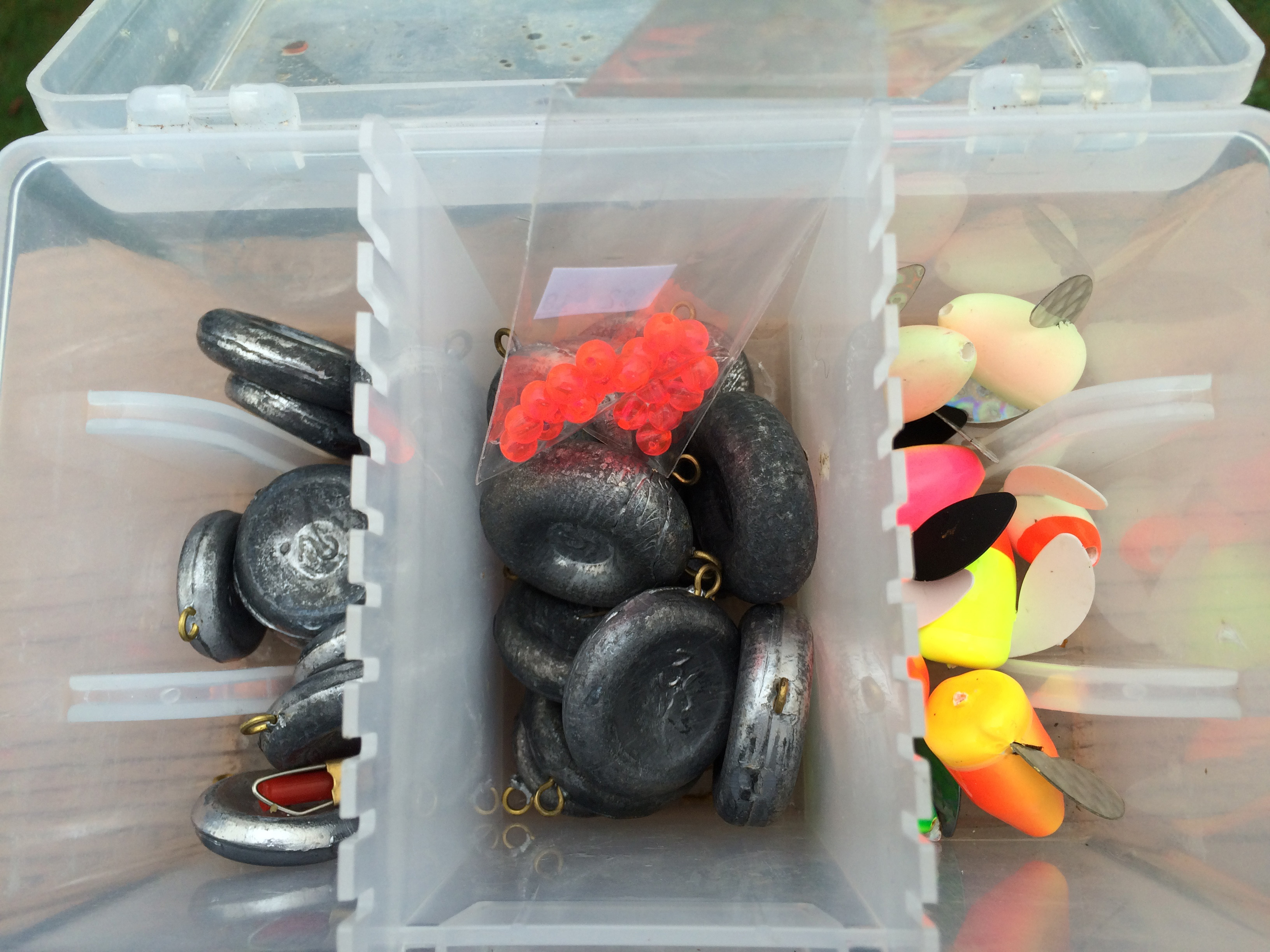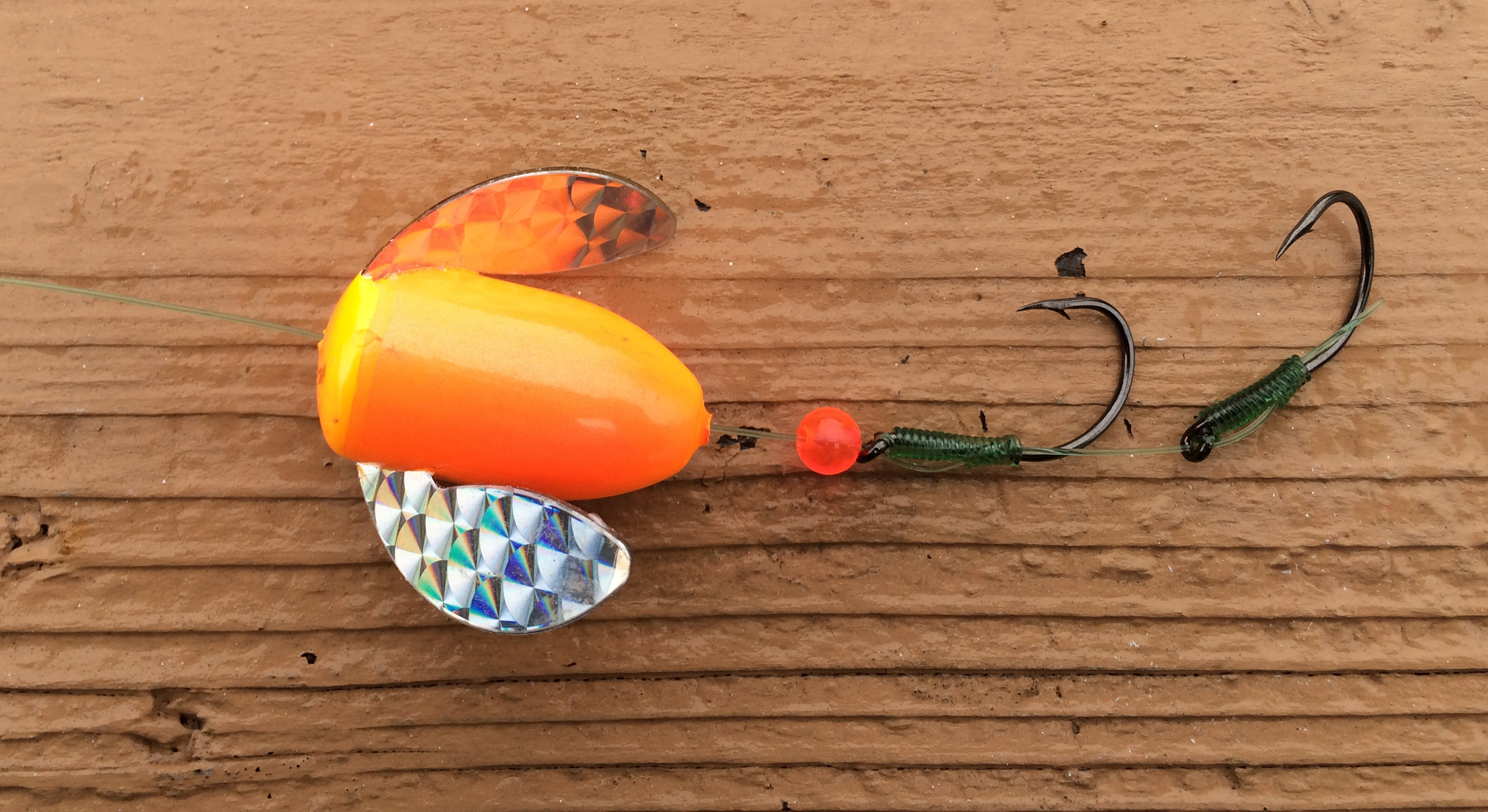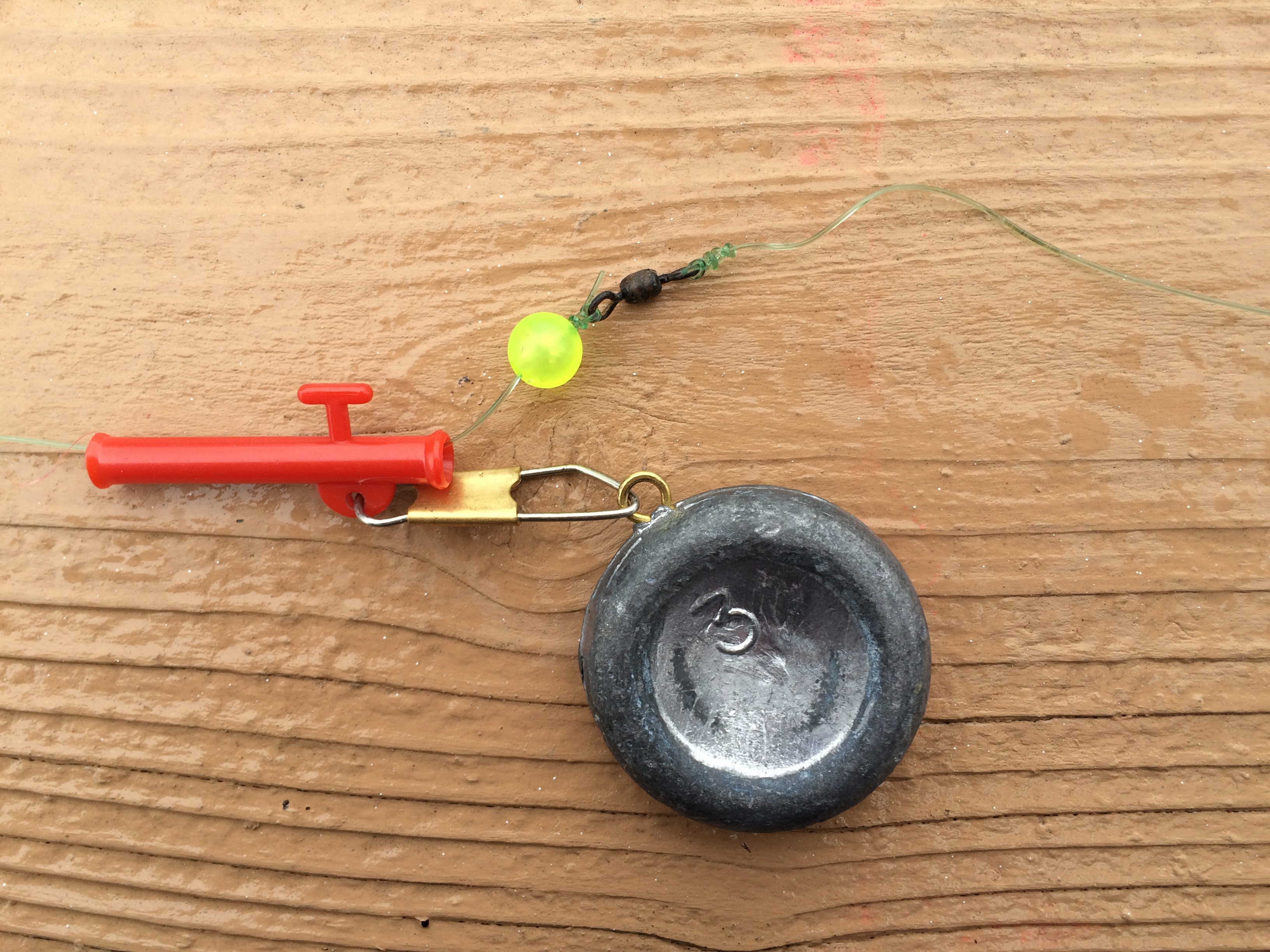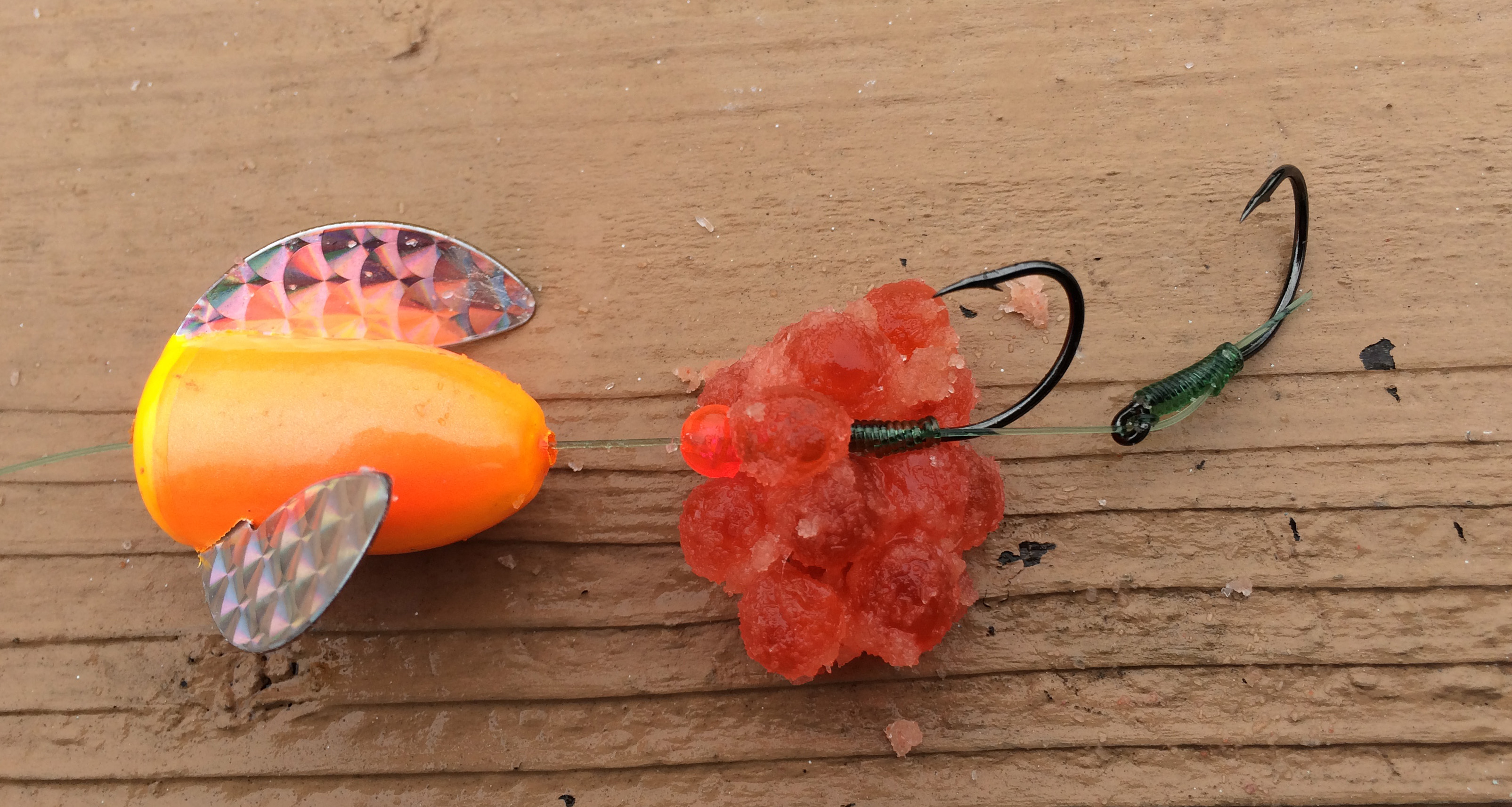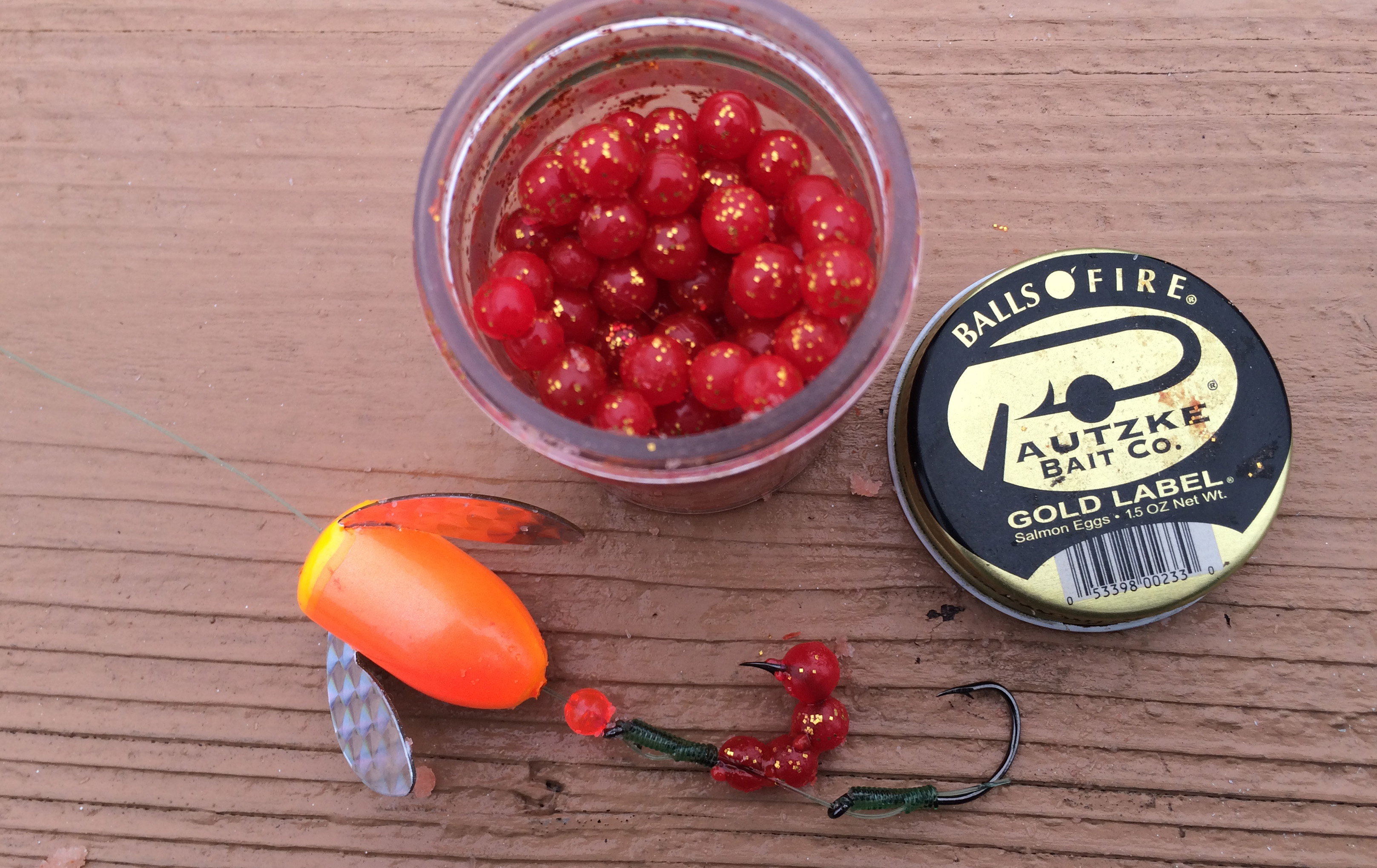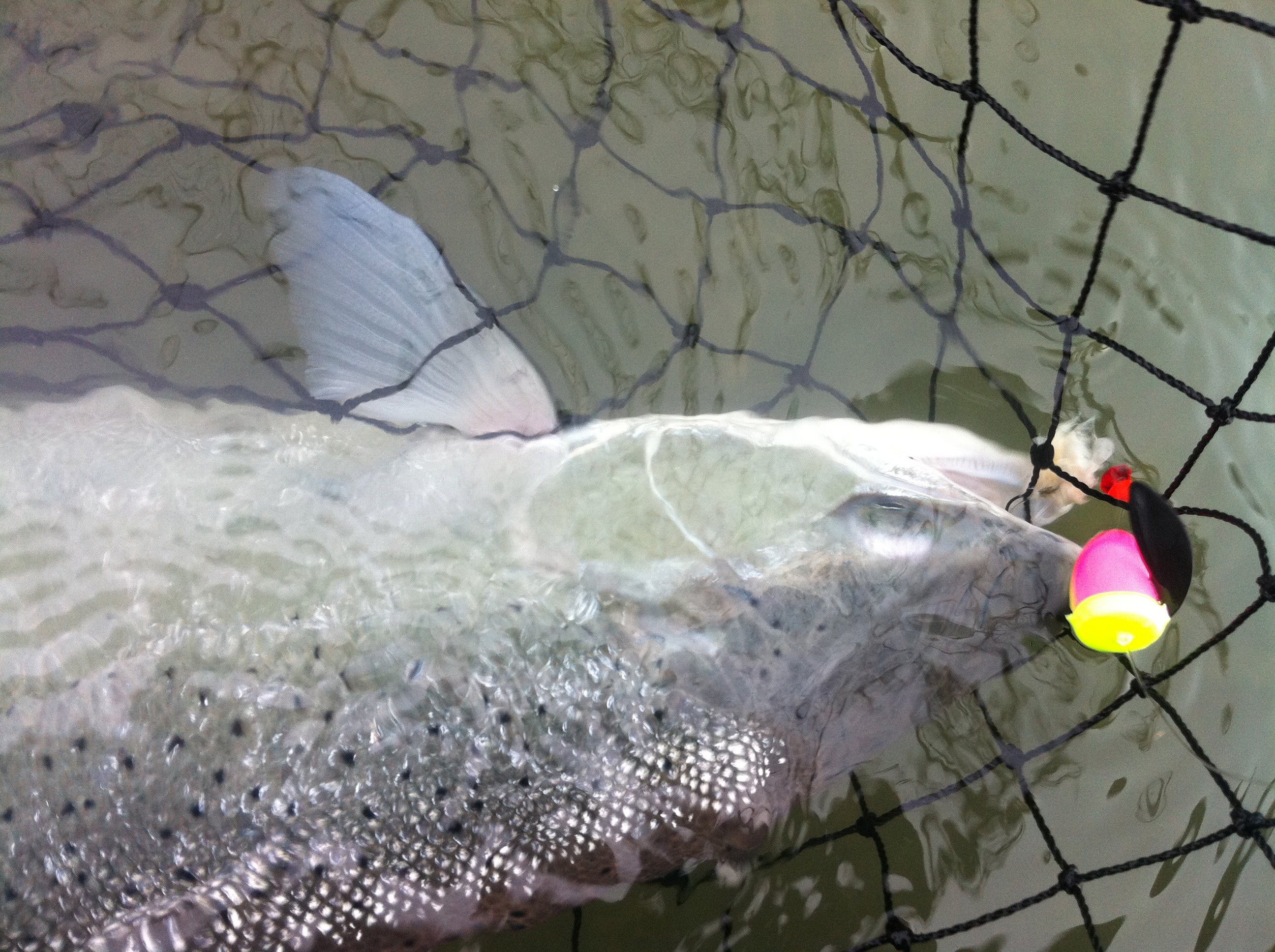By Andy Martin
As the Pacific Northwest gets pounded by back-to-back-to-back storms, and nearly every river from Southern Oregon to the Olympic Peninsula is blown out, anglers are anxious to get back on the water and begin fishing for winter steelhead.
Even when the rains finally stop, many rivers will still be too high for effective side-drifting and other drift boat techniques. Shore anglers used to fishing high water by plunking Spin-N-Glos and roe, however, welcome the high water, as they get first shot at the steelhead in many systems.
Yet to catch on in many areas, plunking from a drift boat (or jet boat) can be effective in high water. On my home river, the Chetco (in Oregon), most drift boaters wait until the river gets below 4,000 cfs to begin fishing. The best side-drifting water doesn’t come into shape until it dips below 3,000.
Plunkers, however, will begin nailing steelhead when the river is flowing at 7,000 or 6,000 cfs, two or three days before the boats get a chance to begin fishing.
By converting over to plunking gear, drift boat anglers can score steelhead in high water, and take advantage of a presentation unattainable from shore. It’s not the most glamorous style of fishing, but it allows you to get out and catch steelhead when the rivers are otherwise too high for other techniques.
(Below) Customers of guide Andy Martin of Wild Rivers Fishing hold a pair of Chetco River steelhead caught by plunking Spin-N-Glos and Pautzke-cured roe in high water.
During high water, steelhead are forced to move into the slow water next to shore. Instead of the normal 4 to 5 feet of water in the preferred side-drifting runs, they are in 2 to 3 feet of water next to the shoreline. This concentrates them better and can make them easier to catch.
I like to position my boat along the edge of willows or a cut bank just above a tailout. Fast water will push the steelhead next to the shore and force them to pass my lineup of baits before they can continue upstream.
Boaters have access to much more water than shore plunkers, who are usually fishing side-by-side on the lower river gravel bars. Boaters also can fish both sides of the river, and can get below the gauntlet of shore fishermen.
Fishing from an anchored drift boat also can be more comfortable then bank fishing, with a heater and cushy seats.
I carry a “plunking box” in my drift boat with a bunch of pancake sinkers, beads, sliders and a selection of Spin-N-Glos. I like sizes 2 and 4, with glow-in-the-dark colors as well as bright orange, pink or yellow. Usually I use my steelhead plug rods, or light salmon rods for plunking. I like line-counter reels, as I can get each bait and Spin-N-Glo at the exact same distance, setting up a wall that the fish have to run into. Some boaters will fish plugs in high water, but roe and Spin-N-Glos won’t foul up with leaves and other debris as easy, and tend to fish best in high, off-color water.
The basic rig is a size 2 or 4 Spin-N-Glo and a double-hooked rig (if allowed), I use heaver gear when plunking from the boat, with 20-pound leaders. You have to be able to fight a fish in fast water and get it to your anchored boat. A 3-foot leader is long enough.
A plastic slider and pancake weight is attached above the leader. Since you are anchored and fishing directly downstream, you can often get away with 2 or 3 ounces of weight, compared to bank anglers who often have to fish twice as much weight,
Bait is an important part of plunking in high water. Steelhead often can’t see well in off-colored water, so the bait is key to bringing them to your offering. That’s another reason plunkers using Spin-N-Glos and roe will often outfish plugs. You can use roe cured for salmon or steelhead. I often use up my leftover salmon roe when plunking high water, as it has more scent. To fish effectively you must change your baits every 10 to 15 minutes. Anchoring in moving water will cause the baits to wash out fairly quickly.
I will fish my baits side-by-side, from the port to starboard side of the boat, and rotate through the baits when freshening them. That way you are always leaving at least one bait and Spin-N-Glo in the water.
You are going to use a little larger piece of roe compared to drift fishing or side drifting. I like roe cured with Pautzke’s Natural BorX O Fire with sugar added, or roe cured with Red and Pink Fire Cure, with a little sugar and borax added.
You also can use several single Pautzke salmon eggs when plunking. I like to use Gold Label and Silver Label because it has glitter which makes them more visible in dirty water. These actually hold up better than roe in really fast water, and add enough scent to draw steelhead to your presentation. I use four to five single eggs on the top hook. The bottom hook is a stinger, and is usually the one that hooks the fish.
When a steelhead hits a plunked Spin-N-Glo and roe, it usually hammers it and sets the hook itself. Action can be fast and furious. I’ve had days with customers on the Chetco or Smith rivers where we hook up to a dozen steelhead plunking while the water is too high to side-drift.
Often bright steelhead are caught while plunking. These are fish that sometimes move high in the system by the time the river drops into shape for normal drift boat techniques. Many of the biggest steelhead caught each year on some rivers are by plunkers, in part because they use heavier gear and are able to land fish that side-drifters may lose.
Editor’s Note: Pautzke pro staffer Andy Martin is a full-time fishing guide and charter boat captain based out of Brookings, Ore. His web sites are wildriversfishing.com and brookingsfishing.com.







